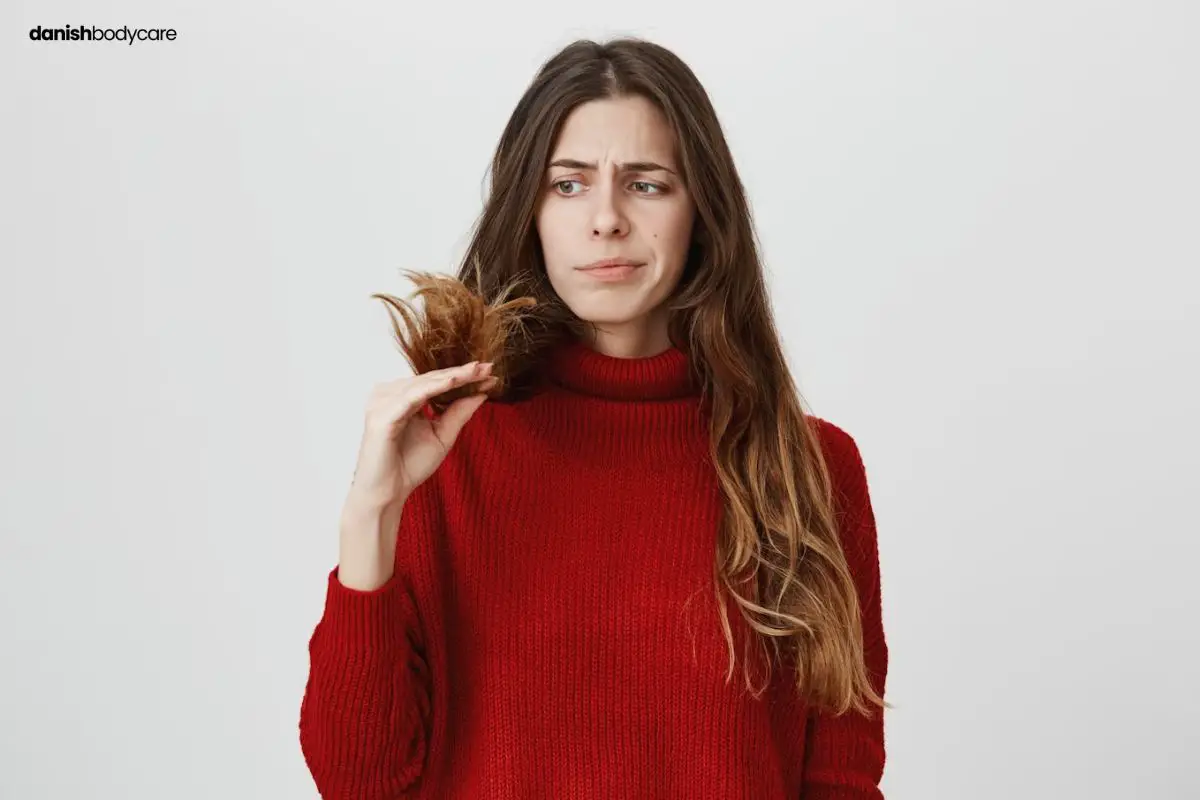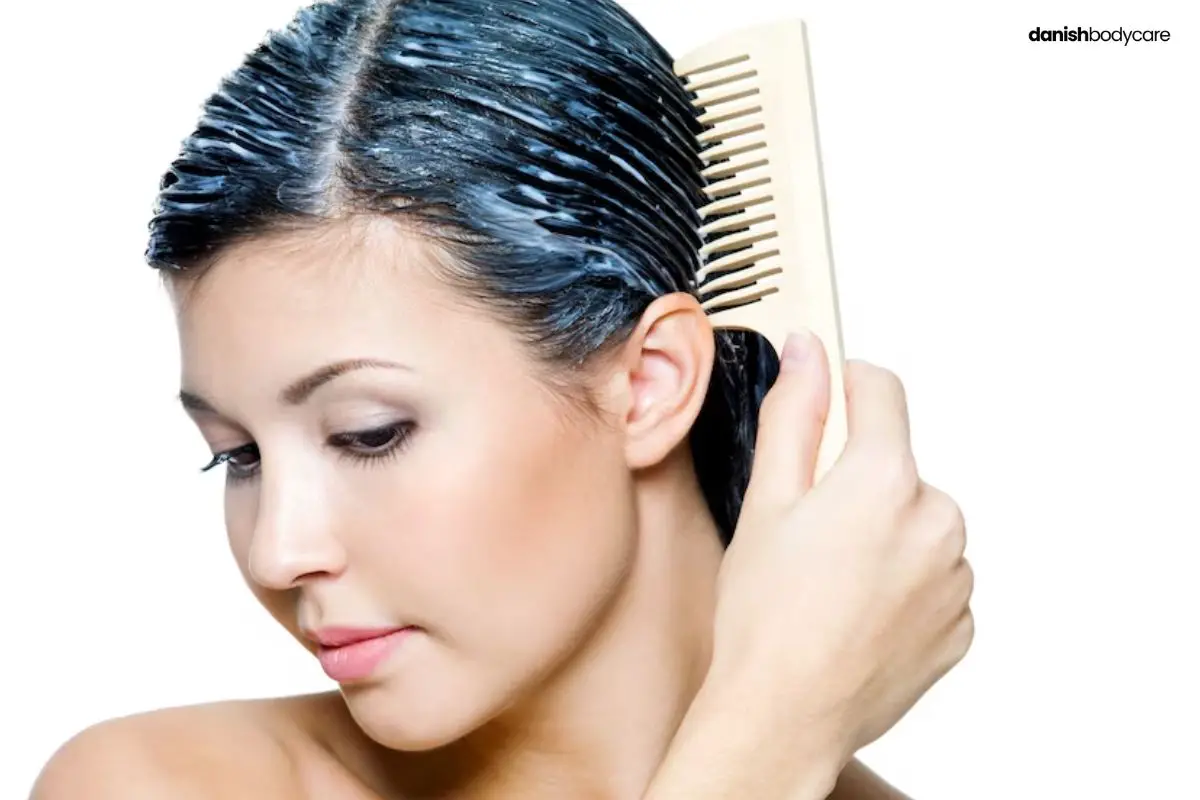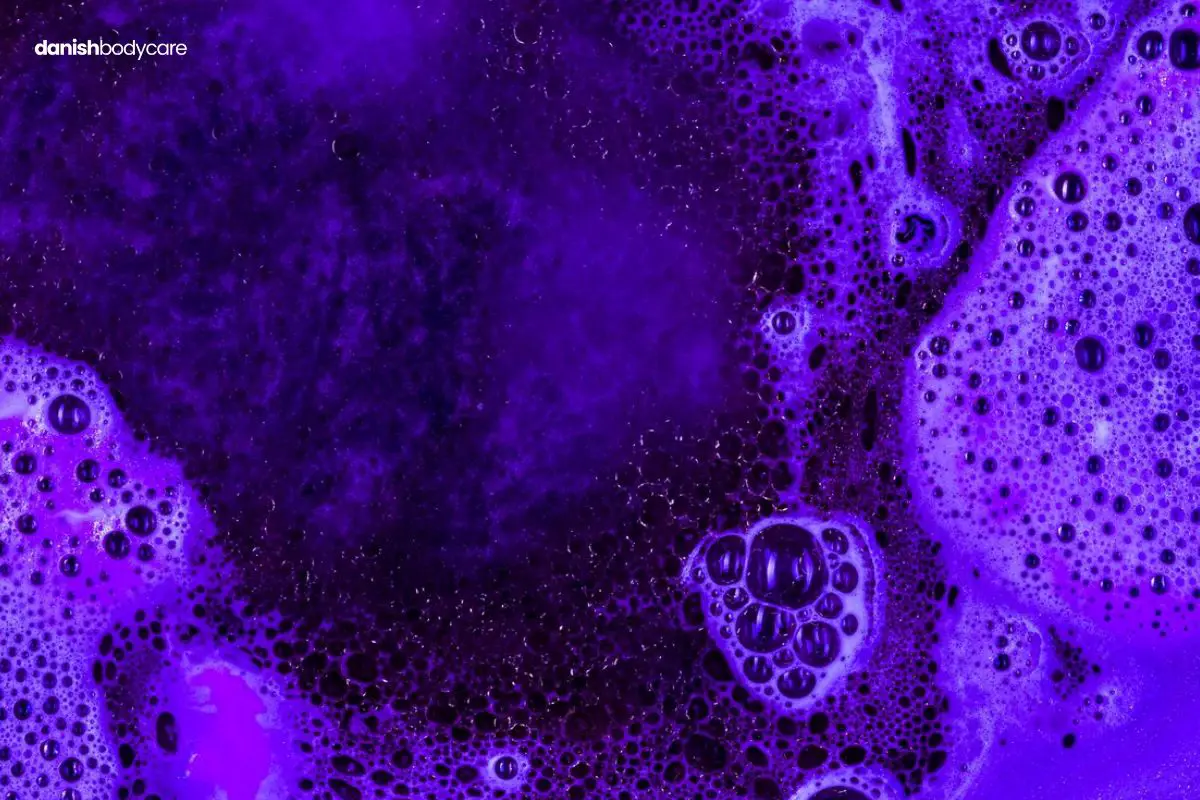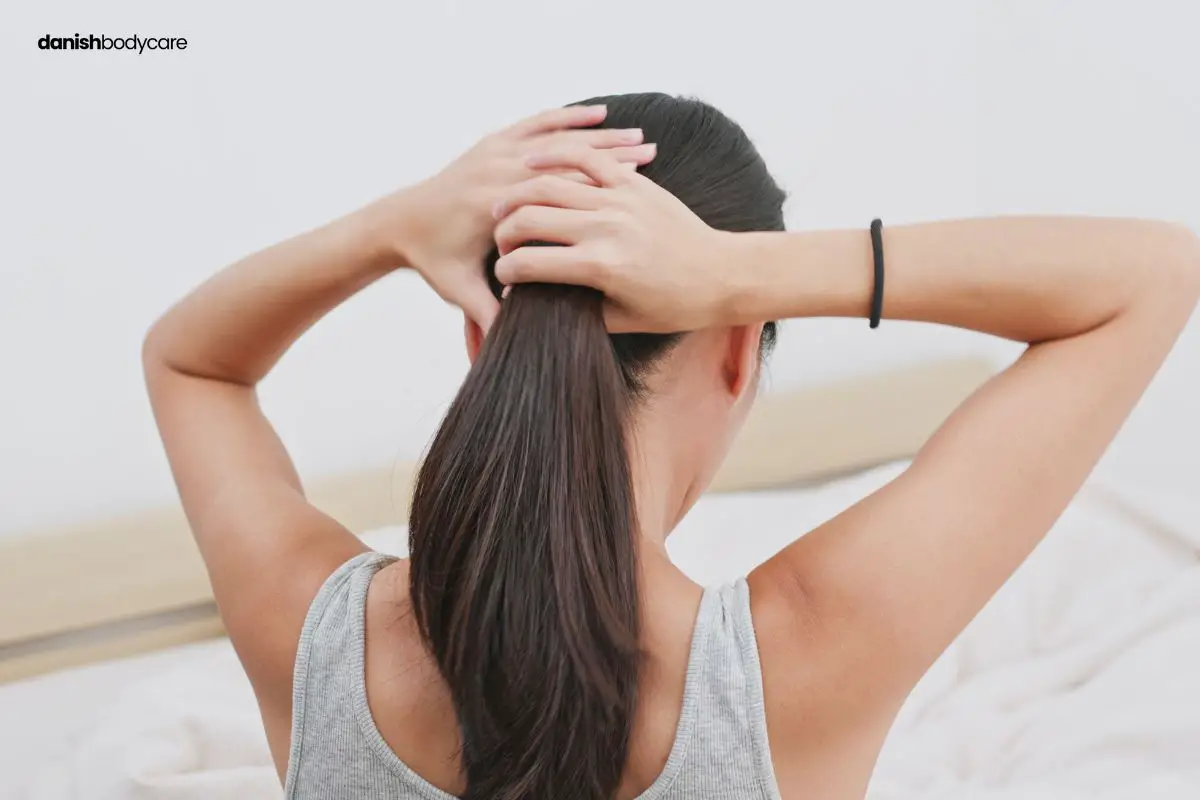Establishing a low-porosity hair routine can be a game-changer for your hair health.
Low-porosity hair is famous for its closed, packed-together cuticles. It can be tough to hydrate.
In this article, we’ll guide you through a bespoke routine. You’ll learn how to treat your low-porosity locks with the love they deserve.
Let’s help you unlock the best version of your hair.
Before giving you the 6-step low-porosity hair care routine, you need to figure out if your hair truly has low porosity. If you already know this, you can skip ahead.
What Is Low Porosity Hair?
Low porosity hair is a type of hair that doesn’t absorb moisture and oils. This means that it takes longer for your hair to feel hydrated, and it dries out slower.
This issue arises from the structure of your hair, in particular the cuticle layer, which is flat.
Your hair has three key components:
- Cuticle: the outermost layer
- Cortex: the middle layer, responsible for strength, elasticity, and color
- Medulla: the innermost layer, not always present in everyone’s hair
In low-porosity hair, the cuticle is packed together. This makes it hard for moisture to get in and penetrate your hair.
Hair Porosity Test
To test your hair porosity, you only need a glass of water and a strand of hair. Take the following steps:
- Clean your hair of any product build-up. This will give you the most accurate reading.
- Take the strand of hair and place it in the glass of water. Observe what happens.
- If the hair sinks fast, you have high porosity hair.
- If it floats on top or sinks in a slow manner, it has low porosity.
Characteristics of Low Porosity Hair
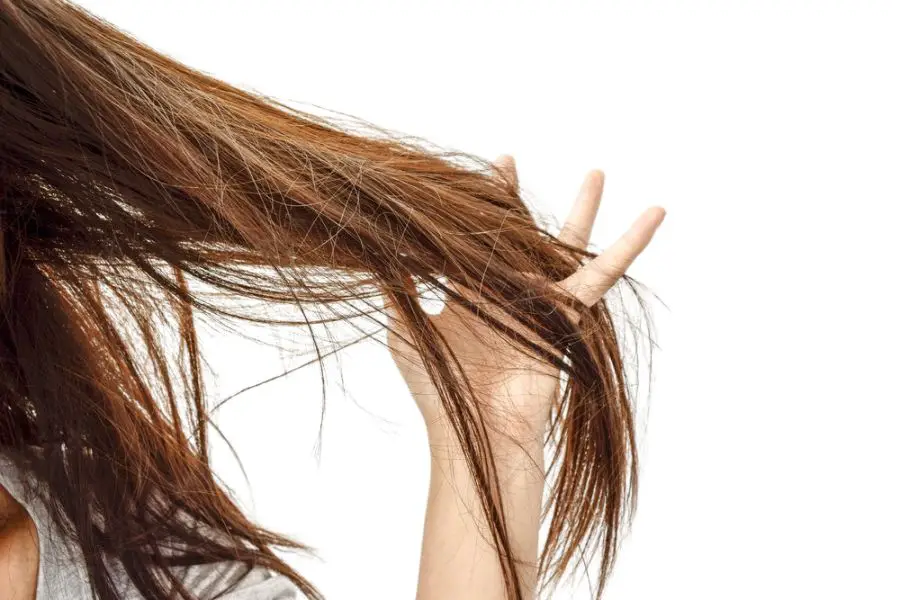
Before you can care for low-porosity hair, you need to know what to care for. Here are the main low-porosity hair characteristics:
- Moisture resistance
- Extended drying time
- Product buildup
- Challenges with oil absorption
- Sensitivity to protein
- Shyniy yet dull and frizzy
- Resistant to chemical treatments
- Smooth but potentially rough and dry
- Lower elastic
- Prone to tangles and matting
- Floating in water
- Prone to split ends
- Product buildup scalp
Moisture Resistance
The packed cuticles in low-porosity hair make it difficult for water and other moisturizing products to enter.
Your hair might feel dry and be more prone to damage due to its resistance to absorbing moisture.
Extended Drying Time
Low porosity hair dries slow, as the tight cuticles hinder water from exiting your hair with ease.
This can leave your hair damp or wet for an extended duration.
Product Buildup
Your low-porosity hair may struggle to absorb products.
This leads to frequent product buildup that can leave your hair feeling heavy or greasy.
Challenges with Oil Absorption
Absorbing oils might be difficult for your hair, limiting the efficiency of some oil-based products.
To ensure proper hydration, use lightweight oils that penetrate cuticles with ease.
Sensitivity to Protein
While they may be beneficial for some hair types, protein treatments can make low-porosity hair stiff or brittle.
Focus on moisture-based treatments to maintain strength and health in your hair.
Shiny Yet Dull and Frizzy
Low-porosity hair can appear shiny due to its flat cuticles. It can also look dull and frizzy if not moisturized properly. Ensure your hair receives enough hydration to maintain its natural shine.
Resistance to Chemical Treatments
The cuticle structure of low-porosity hair can cause it to be resistant to chemical treatments. These include coloring or relaxing.
It may need longer processing times or more potent solutions.
Smooth but Rough and Dry
While it might feel smooth to the touch due to tight cuticles, low-porosity hair can also feel rough and dry if lacking moisture.
Use products that cater to your hair’s specific needs to maintain its smoothness.
Lower Elasticity
Low-porosity hair tends to have less elasticity, making it more prone to breaking or snapping.
To improve its elasticity, practice gentle styling techniques. Also, avoid harmful methods like excessive heat treatment.
Prone To Tangles and Matting
If not moisturized enough, your hair can tangle with ease or become matted.
Use a wide-tooth comb and a good leave-in conditioner to cut tangles and keep your hair manageable.
The tightly packed cuticles in low-porosity hair make it less likely to absorb water, causing it to float. This unique characteristic can help you identify if you have low porosity hair.
Floating in Water
The packed cuticles in low-porosity hair make it less likely to absorb water, causing it to float.
This unique characteristic can help you identify if you have low porosity hair.
Tendency for Split Ends
Low porosity hair is prone to split ends. Trim your hair and use products that help prevent damage.
Product Buildup on Scalp
Like product buildup on hair strands, your scalp may also accumulate product residue with ease.
To maintain a comfortable scalp, be mindful of how much product you’re using and follow a proper cleansing routine.
6-Step Low-Porosity Hair Routine
Here are the six steps for the perfect lo-porosity hair routine:
- Use the right products
- Pree-Poo and cleansing
- Conditioning and detangling
- Deep Conditioning and Steaming
- Moisturizing and sealing
- Styling and definition
1. Use the Right Products
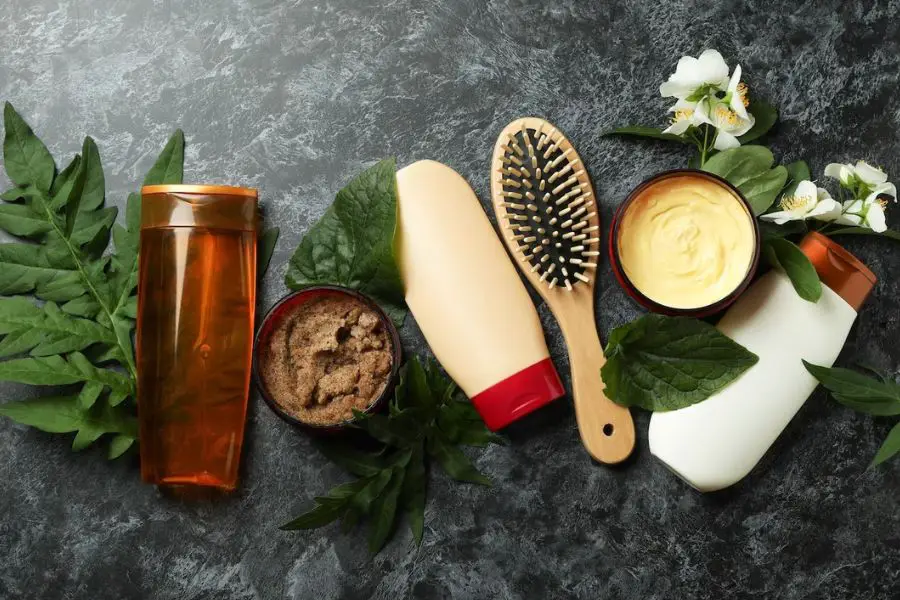
To care for your low-porosity hair, it’s important to pick the right products.
Look for moisturizing ingredients like glycerin, avocado oil, jojoba oil, and shea. Avoid heavy oils and protein treatments, as they may cause buildup.
When selecting a shampoo, choose a clarifying one. This type of shampoo will break down the protein structures, allowing the humectants to penetrate the hair.
Besides to cleansing and conditioning, you can use flaxseed gel for styling and almond milk for pre-poo treatments.
Opt for pH-Balanced Products
The pH level of the products you use plays a key role in maintaining the health of your low-porosity hair.
Choose hair products with a pH close to your hair’s natural pH, generally around 4.5-5.5.
These products help maintain the integrity of the hair cuticle. They ensure it remains healthy and closed.
These products also reduce the potential damage and help your hair keep the right amount of moisture.
Ingredients To Avoid for Low-Porosity Hair
Certain ingredients could exacerbate the natural challenges that come with low-porosity hair. These are the ingredients to avoid with low-porosity hair:
| Ingredients to Avoid for Low-Porosity Hair | Potential Effect |
|---|---|
| Sulfates | Can strip hair of its natural oils, causing dryness and brittleness |
| Silicones | Build up on hair over time, blocking moisture absorption |
| Non-Water Soluble Proteins | Lead to buildup and dryness as they are not easily washed off the hair |
| Waxes | Can coat the hair, hindering the penetration of moisture into the hair shaft |
| Lanolin | Can weigh down low-porosity hair and prevent the absorption of moisturizing products |
| Resins | Can cause buildup and prevent moisture from penetrating the hair shaft |
| Alcohols | Can be overly drying to the hair, stripping it of its natural moisture |
| Heavy Butters | Can build up and block moisture on low-porosity hair |
| Mineral Oil and Petrolatum | Can prevent the absorption of essential moisture |
| Heavy Oils | Can coat the hair and create a barrier that blocks moisture |
| Synthetic Perfumes | Can cause irritation and dryness |
| PPG, PEG, and EO Ingredients | Can cause buildup and prevent moisture absorption in low-porosity hair |
| Formaldehyde | Can strip the hair of its natural oils and cause dryness, along with scalp issues |
2. Pre-Poo and Cleansing

Before applying any product to your hair, make sure it is a bit wet. This is important because dampness can aid the products in infiltrating the cuticles.
The moisturizing and nourishing effects of these products are enhanced. This ensures your hair benefits from their application.
Purify Your Hair on a Regular Basis
Purifying your hair using a special shampoo once or twice a month is an essential part of caring for low-porosity hair.
This helps cut any buildup of products that can create a barrier on the hair surface. They prevent moisture from penetrating.
3. Conditioning and Detangling

To keep your low-porosity hair hydrated and protected, apply water-based moisturizers. Follow up with lightweight oils to seal in the moisture.
Divide the application of products into sections. Work from the ends to the roots to help distribute the products evenly.
Which Oil Is Best for Low Porosity Hair?
The perfect oil for low-porosity hair tends to be of a lighter consistency. Such oils don’t make your hair feel heavy and are adept at enhancing the retention of moisture.
| Oils for Low Porosity Hair | Primary Benefits | Key Nutrients |
|---|---|---|
| Argan Oil | Enhances shine and smoothness without greasiness | Essential fatty acids, Vitamin E |
| Jojoba Oil | Maintains moisture balance and promotes overall hair health | Resembles the sebum naturally produced by the scalp |
| Avocado Oil | Penetrates the hair shaft and strengthens it from within | Monounsaturated fats, Vitamins A, D, and E |
| Apricot Oil | Easily penetrates the hair shaft without leaving a greasy residue | Oleic acid, Linoleic acid |
| Sesame Oil | Healing properties, beneficial when used in moderation | Vitamin E, B complex, Minerals |
| Camellia Oil | Penetrates deep into the hair shaft, provides nourishment without weighing the hair down | High Oleic acid content, Light texture |
| Grapeseed Oil | Helps to lock in moisture, fights frizz, and adds shine | Antioxidants, Omega-6 fatty acids |
| Sweet Almond Oil | Moisturizes the hair without making it feel heavy | Vitamins A, B, and E, Omega-9, Omega-6 fatty acids |
| Rosehip Oil | Promotes hair health and adds shine without causing build-up | Vitamins A and C, Essential fatty acids |
4. Deep Conditioning and Steaming
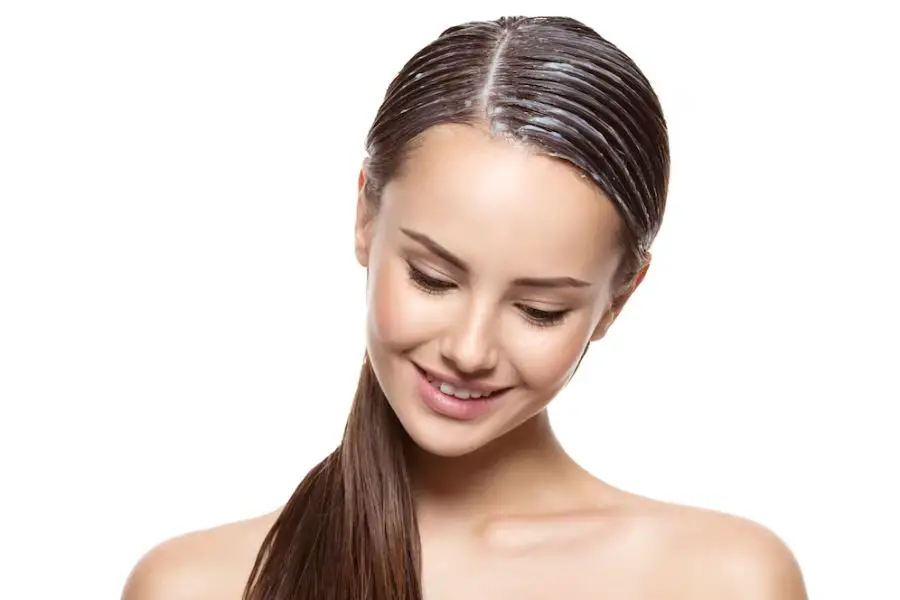
Deep conditioning your hair on a regular basis can help you keep moisture, but only if you do it the right way. This involves using heat.
Use Heat
Using heat during deep conditioning sessions can improve the effect of your hair treatments.
Heat aids in lifting the bound cuticles of low-porosity hair. This allows for better absorption of nutrients and moisture. You can use a hair steamer or a heated cap to achieve this.
5. Moisturizing and Sealing

Humectants, such as glycerin or honey, can be great additions to your hair care routine. They attract moisture from the atmosphere and bind it to your hair. This provides long-lasting hydration.
Hydration is especially beneficial for low-porosity hair, which can struggle keep moisture.
6. Styling and Definition

Apply gels, leave-in conditioners, and natural oils to style and define your low-porosity hair.
Apply these products to damp hair. It helps with better absorption and provides more effective results.
The LOC and LCO Methods
The LOC and LCO methods are two popular techniques to moisturize your low-porosity hair.
LOC stands for:
- Liquid
- Oil
- Cream
LCO represents:
- Liquid
- Cream
- Oil.
Both methods are about the order you apply products to lock in moisture.
Using the LCO method is often recommended for low-porosity hair, as follows:
- Start with a water-based s as your liquid.
- Follow up with a thick cream with emollients and panthenol that help to keep your hair feeling soft.
- Seal the moisture with an oil that doesn’t leave any residue.
No matter which method you choose, remember to be gentle and consistent in your routine.
Listen to your hair and adjust the steps as needed for better results.
Frequently Asked Questions
What are the best shampoos for low-porosity hair?
For low-porosity hair, it’s essential to use shampoos that are lightweight and sulfate-free. They cleanse without stripping away natural oils. Look for shampoos with ingredients like glycerin, aloe vera, and honey. They help to moisturize and hydrate your hair.
How can I grow my low-porosity hair faster?
To promote hair growth in low-porosity hair, follow a consistent routine that focuses on moisture retention. Deep condition your hair using heat to open up the cuticles. This ensures that moisture penetrates the hair shaft. Protect your hair from damage using gentle styling techniques and minimizing heat usage.
Is coconut oil a good choice for low-porosity hair?
Coconut oil can work for some people with low-porosity hair, but it might not be best for everyone. Using heavy oils like coconut oil can weigh the hair down and cause buildup. If you choose to use coconut oil, use it rarely and consider combining it with lighter oils.
How often should I wash low-porosity hair?
Washing your hair once a week is a good starting point. You may need to adjust the frequency based on factors. These factors include exercise, scalp health, and how fast your hair accumulates dirt and product buildup.

